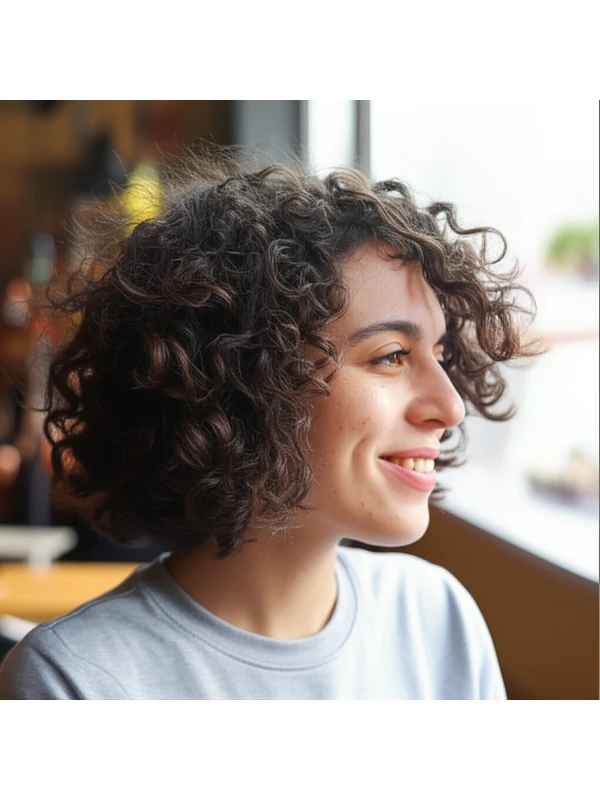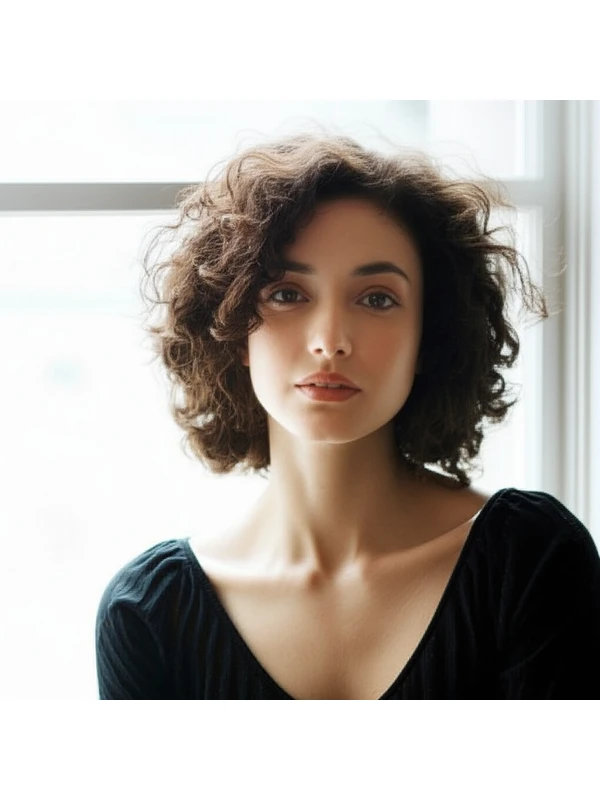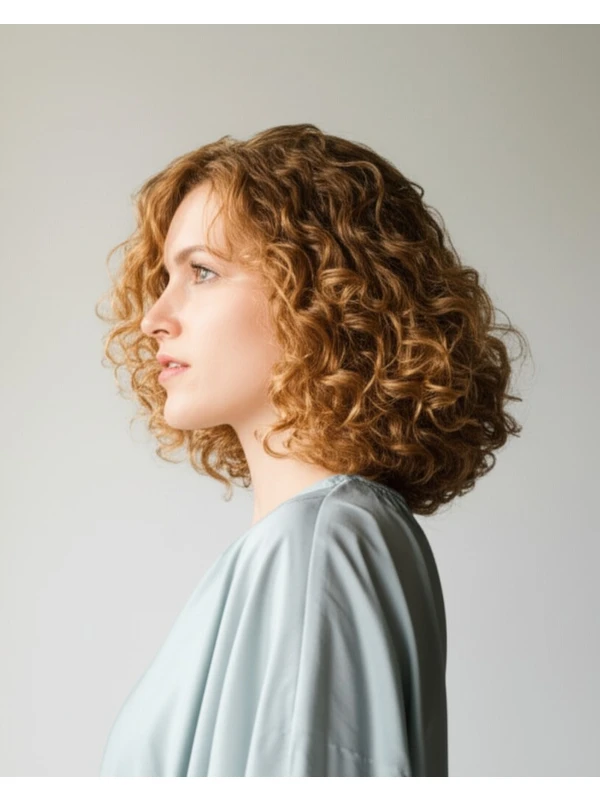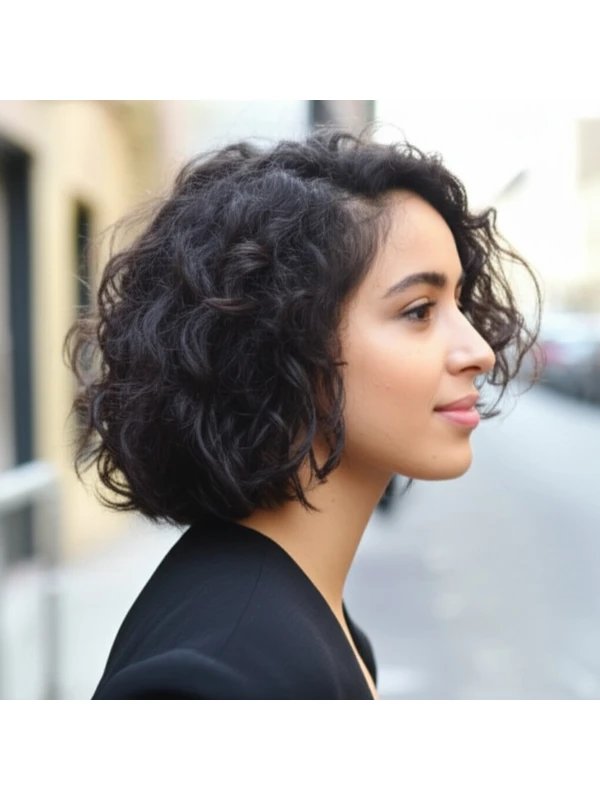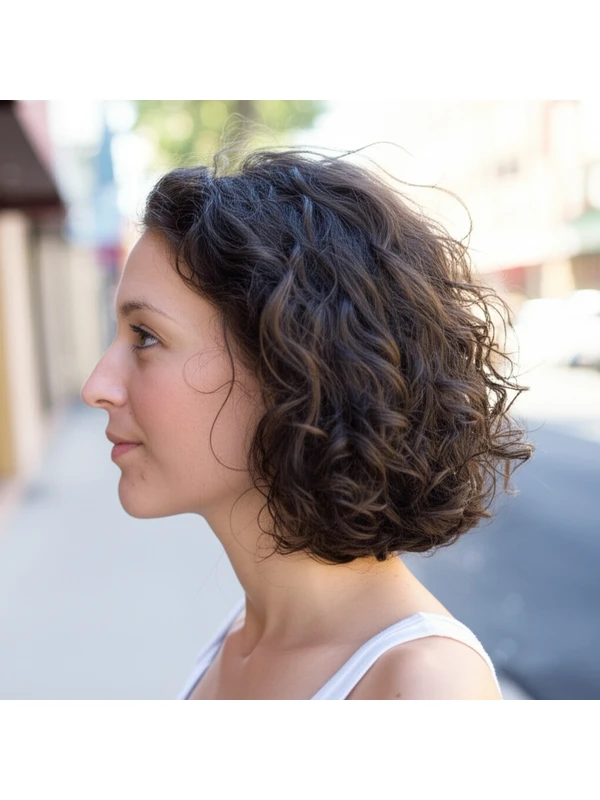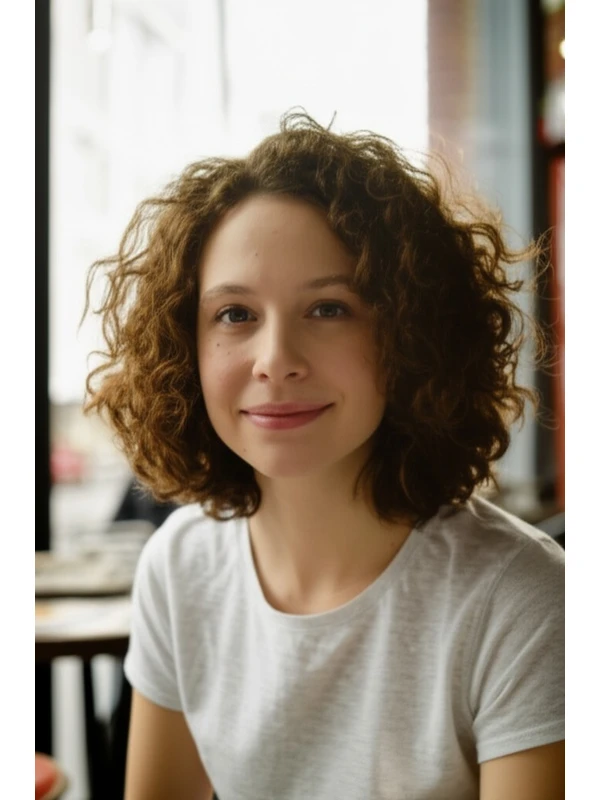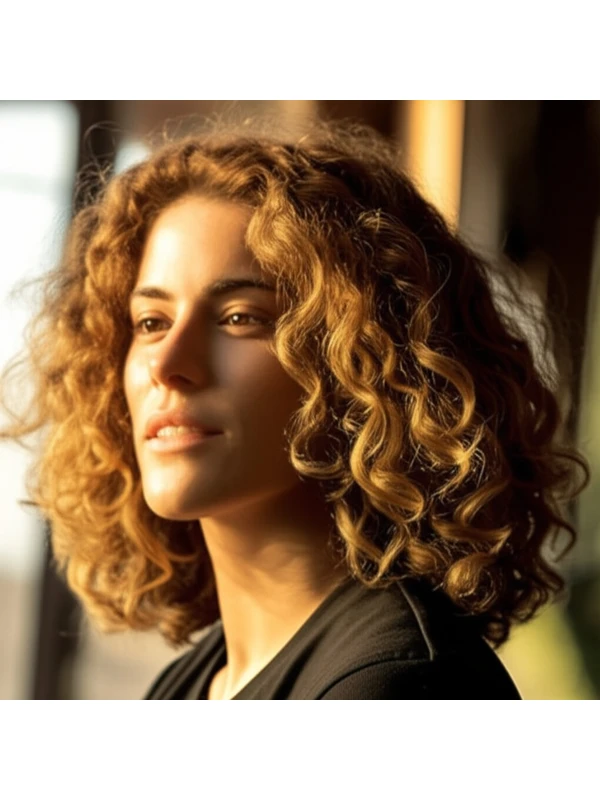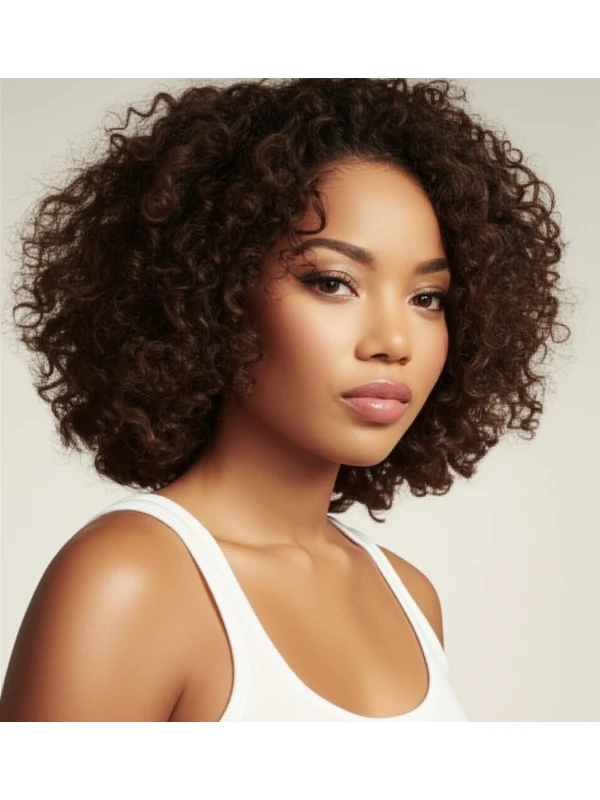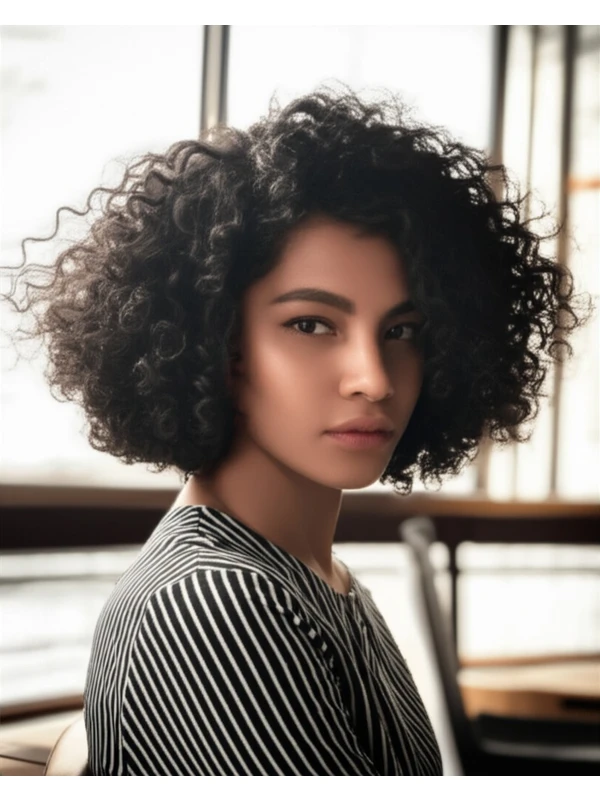#Defined Curls: Embracing Your Natural Texture
Defined curls are more than just a hairstyle; it’s an embrace of your natural texture! This guide will help you understand how to achieve, maintain, and style beautifully defined curls for any hair type, face shape, or lifestyle. Let's dive in!
#1. Background & Definition: What Are Defined Curls?
Defined curls focus on enhancing the curl pattern already present in your hair. It’s about creating clear, individual ringlets or coils rather than a fuzzy, undefined look. The cut geometry is key – layers are strategically placed to remove weight and encourage separation. Think of it as sculpting your natural shape!
- Cut Geometry: Layers are crucial. They vary based on curl type - tighter curls need more layering for lift and volume; looser waves might require fewer layers to maintain length. Face-framing is often incorporated, softening the overall look.
- Key Features: Distinct, separated curls or coils with a consistent pattern. Good bounce, movement, and shape are hallmarks of this style.
- Typical Length Ranges: This style works beautifully from chin-length bobs to long, flowing lengths. The longer the hair, the more dramatic the curl definition can be (but also potentially the more styling it requires).
- Alternative Names: Curl Power Cut, Defined Spiral Style, Enhanced Curls, Natural Curl Definition.
#2. Face Shape Fit: Finding Your Perfect Balance
Defined curls can flatter almost any face shape with careful tailoring! Here's a breakdown:
- Oval: Lucky you! This style generally looks fantastic on oval faces. Experiment with different lengths and fringe options to personalize the look.
- Fringe Options: A wispy, side-swept bang softens features or a blunt, curly fringe adds boldness.
- Round: Defined curls add height and length, visually slimming a round face. Avoid too much volume at the cheeks.
- Fringe Options: A long, angled fringe that hits below the cheekbones is ideal to elongate the face.
- Square: Soft layers and face-framing pieces soften sharp angles. Volume on top adds height and balance.
- Fringe Options: A soft, textured fringe or a side-swept bang works well. Avoid blunt, straight bangs which can accentuate angularity.
- Heart: Defined curls create width at the jawline, balancing a wider forehead. Longer layers are generally more flattering than shorter ones.
- Fringe Options: A soft, wispy fringe or no fringe at all is best to avoid drawing attention upwards.
- Diamond: This face shape benefits from styles that soften angles and showcase cheekbones. Defined curls create balance by adding width around the forehead and chin.
- Fringe Options: A side-swept bang can highlight your eyes and cheekbones, while a longer fringe elongates the face.
- Oblong: Shorter lengths or layers that add volume at the sides can make an oblong face appear wider and more balanced. Avoid styles that emphasize vertical length.
- Fringe Options: A full, curly fringe helps to shorten the appearance of a long face.
#3. Body Proportions & Height Guidance: Tailoring for Your Silhouette
Your body proportions influence how a defined curl style will look and feel on you.
- Petite: Shorter lengths (chin-length to shoulder-length) prevent the hair from overwhelming your frame. Avoid excessive volume at the bottom, which can add visual weight.
- Average Height: Most lengths work well! Consider layering techniques that create movement without adding too much bulk.
- Tall: Longer lengths and more volume are generally flattering on taller individuals.
- Narrow Shoulders: Layers around the face and shoulders add width and balance. Consider a side part to further broaden the shoulder line.
- Broad Shoulders: Avoid excessive volume at the shoulders, as it can accentuate their width. Focus on height at the crown of your head.
- Short Neck: Medium-length styles that end above the collarbone help elongate the neck.
- Long Neck: Longer lengths and more volume around the face help balance a longer neck.
#4. Works Best With Hair Types & Densities: Finding Your Curl Match
Defined curls are adaptable, but understanding your hair’s characteristics is key.
- Hair Types:
- Straight (Type 1): While not naturally curly, you can achieve defined curls with the right cut and styling techniques using curl-enhancing products. Expect looser waves rather than tight coils.
- Wavy (Type 2): Defined curls enhance existing wave patterns into more structured spirals.
- Curly (Type 3): This style shines! It enhances natural ringlets and coils, creating a bouncy, defined look.
- Coily (Type 4): Defined curls bring out the beautiful spiral shapes within coily hair, reducing frizz and maximizing moisture retention.
- Hair Densities:
- Fine Hair: Needs strategic layering to create volume without looking sparse. Use lightweight products.
- Medium Hair: The most versatile density; layers will enhance curl definition beautifully.
- Thick Hair: Requires more significant layering to remove weight and allow curls to spring up. Consider point-cutting techniques for softer edges.
- Shrinkage: A crucial factor! Curls and coils can shrink significantly when dry (often 50% or more). Account for this when choosing a length – what looks like shoulder-length hair wet might be much shorter when dry.
#5. Styling Variations: From Casual to Evening Glam
- Sleek vs. Textured: Sleeker styles use smoothing products and techniques; textured styles embrace natural frizz and volume.
- Middle vs. Side Part: A middle part creates symmetry, while a side part adds softness and asymmetry.
- Fringe Variations: Wispy, blunt, angled – experiment to find what flatters your face shape.
- Occasion Styling:
- Casual: Air-dry with curl cream or mousse for effortless definition.
- Office: A sleeked-down style with a side part and minimal frizz is polished and professional.
- Evening: Add volume at the roots using a diffuser, apply serum for shine, and consider accentuating curls with decorative accessories.
#6. Maintenance: Keeping Your Curls Thriving
- Trim Cadence: Every 6-12 weeks to maintain shape and remove split ends (more frequent for shorter styles).
- At-Home Routine: Gentle cleansing, deep conditioning weekly, leave-in conditioner daily.
- Heat vs. Air-Dry: Minimize heat styling! When using heat, always use a heat protectant. Air drying is ideal for curl health.
- Product Checklist:
- Shampoo & Conditioner: Moisturizing formulas specifically designed for your hair type.
- Leave-In Conditioner: Essential for hydration and detangling.
- Styler (Curl Cream/Mousse/Gel): To define curls and control frizz.
- Finishing Serum/Oil: For shine and to seal in moisture.
- Estimated Daily Styling Time: 15-45 minutes, depending on hair length, density, and desired style.
#7. Grow-Out Roadmap: Evolving Your Look
- Months 1-3: The initial shape is most defined. Regular trims are crucial to prevent the curls from losing their bounce.
- Months 3-6: Layers may start to blend together slightly. Consider a trim focusing on shaping and removing any unwanted bulk. Experiment with styling techniques to maintain volume and definition.
- Beyond 6 Months: Continue regular trims, adjust product usage based on hair’s needs, and consider refreshing the cut with subtle changes (e.g., adding more face-framing layers).
#8. Color Pairings: Enhancing Your Curls' Beauty
- Warm Undertones (Golden, Yellow): Honey blonde, caramel highlights, copper tones enhance warmth.
- Cool Undertones (Pink, Blue): Ashy blondes, cool browns, silver accents complement coolness.
- Low-Commitment Options: Gloss treatments add shine and tone without permanent color changes.
#9. Season & Occasion Guide: Styling for Every Moment
- Spring/Summer: Lighter styling products to avoid buildup in humidity. Consider a more airy, undone look.
- Fall/Winter: Richer moisturizing products combat dryness. Embrace deeper tones and more defined curls for added warmth.
- Work: Sleek, polished styles with minimal frizz.
- Weddings: Romantic, voluminous looks with soft waves or intricate braids incorporating the curls.
- Parties: Bold, playful styles that showcase your personality – consider adding accessories!
#10. Cost & Time: Salon Investment
- Salon Time: Typically 1.5 - 3 hours for the initial cut and style.
- Price Range: Expect to pay a moderate to high price range (relative terms) depending on location, stylist experience, and hair length/density.
#11. Pros & Cons: Weighing Your Options
Pros:
- Beautifully defined curls enhance natural texture.
- Versatile style suitable for various occasions.
- Can improve hair health with proper care.
Cons:
- Requires regular trims to maintain shape.
- Styling can be time-consuming (especially initially).
- Product buildup possible if not using appropriate cleansers and clarifying treatments.
#12. FAQs: Your Curl Questions Answered
- Can I achieve defined curls with fine hair? Yes! Strategic layering and lightweight products are key.
- How do I prevent frizz? Use moisturizing products, avoid harsh sulfates in shampoos, and protect your hair from heat styling.
- What’s the best way to diffuse my curls? Hover the diffuser a few inches away from your scalp and gently cup sections of hair.
- My curls are stringy – what can I do? Protein treatments can help strengthen hair strands, while moisturizing masks add hydration and definition.
- How often should I wash my curly hair? It depends on your hair type and lifestyle, but generally 2-3 times per week is sufficient.
- Can defined curls work with a balayage color technique? Absolutely! The dimensional effect of balayage enhances the curl pattern beautifully.
This guide provides a comprehensive starting point for embracing defined curls. Remember to consult with a stylist experienced in curly hair cutting and styling for personalized advice tailored to your unique needs!

